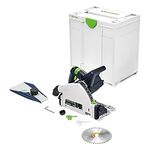Cordless Reciprocating Saws Almost Come of Age
While they're not up to the challenges of full-time demolition, cordless saws are a great option on a roof or in a crawlspace.

Synopsis: This tool survey features eight cordless reciprocating saws ranging from 14.4v to 24v, explaining their advantages and disadvantages compared to corded saws and comparing each saw’s specifications, cutting ability, and run time.
A dozen years ago, my satisfaction with my first 9.6v Makita cordless drill convinced me that cordless tools were the wave of the future, and I plunked down nearly $300 to buy a 12v, 6-1 ⁄2-in. cordless circular saw. But I can’t think of one single job where that saw earned its keep. For the most part, it has remained in its box, a reminder of the limitations of technology and my own gullibility.
But like The X-Files’ Fox Mulder, I want to believe, and I am convinced that eventually the technology of cordless tools will catch up with the promise. As this new crop of cordless reciprocating saws demonstrates, that day is almost here.
Cordless saws don’t keep up with their corded cousins
I like the idea of being able to take my reciprocating saw up on a roof or down into a crawlspace without having to drag a power cord behind me. What I don’t like is the idea of having to crawl back out again with the job half-finished, looking for another battery. This problem is an issue with these saws; their run times are no more than five minutes. In general, cordless saws are heavy because of the battery, have shorter strokes and run more slowly than corded saws. Also, cordless reciprocating saws aren’t available with orbital action, a feature that significantly increases a corded saw’s cutting efficiency.
Except for the convenience of not having to be attached directly to an AC power supply, none of these cordless saws can compete with even the most modest corded reciprocating saw. If pure cutting ability is your sole criterion and you can’t conceive of ever needing to disassociate from a power cord, then stop right here, save yourself about $120, and buy an inexpensive Milwaukee or DeWalt corded saw.
For short runs, though, the difference in performance from corded saws isn’t a huge one, and the convenience offered by cordless tools alone might sway you. These tools are real, all with wrenchless blade clamps, and when fully charged, they cut almost as quickly as 6-amp corded saws (the low end of the power range).
If the price for one of these saws doesn’t scare you off; if you don’t need to use the saw on a continuous basis; if the saw has enough speed and power to cut the material you’re working with; and if the saw has enough durability to get you through the job at hand without requiring you to swap batteries constantly, one of these cordless reciprocating saws might be just the ticket. These are big ifs, so let’s take a look at how the cordless saws measure up.
For more photos and details, click the View PDF button below:
Fine Homebuilding Recommended Products
Fine Homebuilding receives a commission for items purchased through links on this site, including Amazon Associates and other affiliate advertising programs.

All New Kitchen Ideas that Work

Festool Cordless Track Saw (TSC 55 KeB-F)

Not So Big House






















